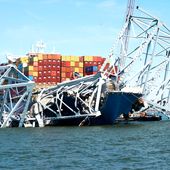OPINION:
Is the Islamic regime in Tehran building a nuclear weapon or not? A recent statement from the Secretary of Defense suggests that it definitely is not, yet at the same time probably might be. This is the latest indication of Obama administration Iran policy in disarray.
On “Face the Nation” last Sunday Secretary of Defense Leon Panetta asked and answered his own question regarding Iran. “Are they trying to develop a nuclear weapon? No.” This was an oddly definitive statement regarding Iranian intentions. Several analyses from the intelligence community have been strictly equivocal, looking only at what Tehran is doing and not conjecturing on why they are doing it. If Mr. Panetta is correct that Iran is not trying to develop a nuclear weapon, then there is no problem.
The latest report from the International Atomic Energy Agency concluded that “Iran has carried out activities relevant to the development of a nuclear explosive device.” Though this seems to contradict Mr. Panetta’s blanket assertion, the secretary qualified his remark by saying, “we know that they’re trying to develop a nuclear capability, and that’s what concerns us.”
The distinction between “building a nuclear weapon” and “developing a nuclear capability” has been floating around the liberal policy establishment for several years. Its proponents believe that what Iran seeks to do is have all the parts necessary to make a nuclear weapon without crossing the threshold of actually assembling and testing one. This allows those who previously denied that Tehran had a nuclear weapons program to cling to the hope that an Iranian bomb is not inevitable, despite evidence to the contrary. Mr. Panetta said that “our red line to Iran is, do not develop a nuclear weapon.” Having the parts to build the bomb, however, is apparently OK.
Any country serious about building a nuke isn’t going to agree to make the components without at least assembling and testing them. A nuclear weapon is a complex system that must be tested to verify it can work. Iran is, after all, the country that feels the need to Photoshop pictures of its missile tests to make them seem more impressive. The idea that it would be able to slap together a nuclear weapon in the midst of a crisis and successfully use it is not credible.
Unassembled weapons have little deterrence capacity. In fact, they may even have the opposite, destabilizing, effect. A rational actor would be more likely to mount a first strike against an enemy with an A-bomb in kit form than against either an enemy lacking a nuclear weapon or one with an established second-strike capability. The disassembled nuke is the worst of both worlds for Tehran, since it demonstrates proof of intent but gives them no ready deterrent. If they had the parts to build a bomb, they would be foolish not to put them together.
Mr. Panetta’s statement is both an excuse to not take action and a plea to Tehran not to force America’s hand by testing a nuclear weapon. They must be closer to the bomb than most people think.
The Washington Times



Please read our comment policy before commenting.